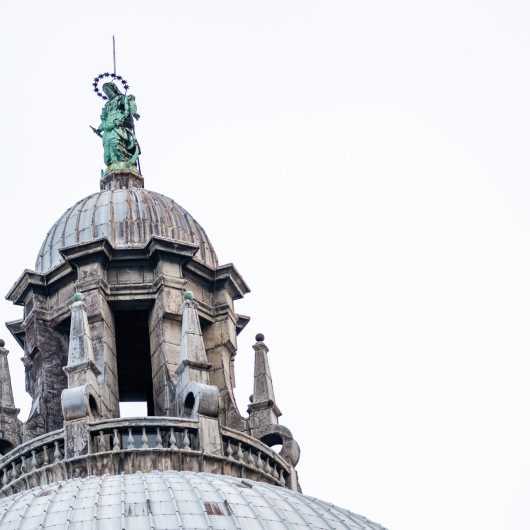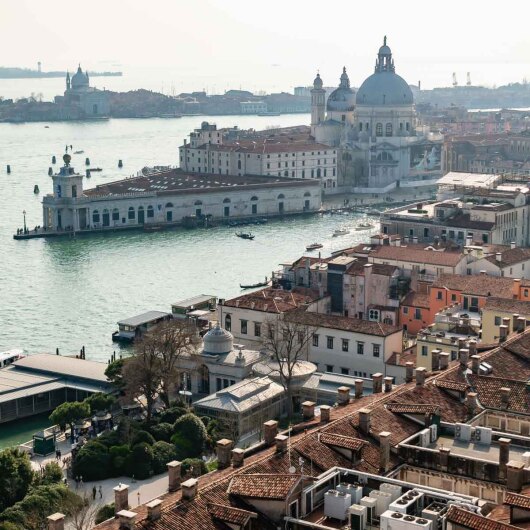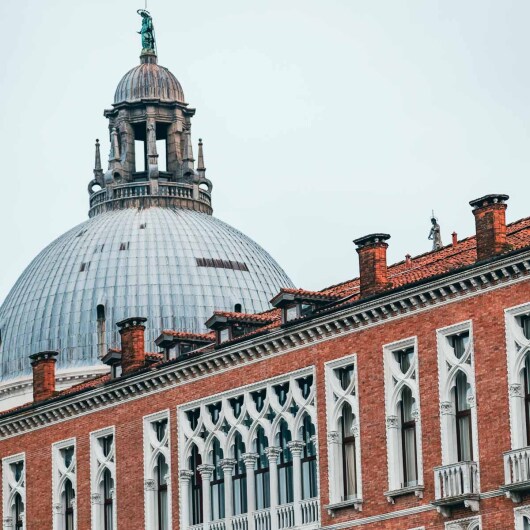Basilica Santa Maria della Salute
Beyond the Guidebooks: Standing Awe in the Shadow of Venice’s Sacred Beacon
Baroque Brilliance in Stone
Santa Maria della Salute is Longhena's Baroque masterwork, distinguished by its great octagonal layout and soaring dome visible throughout Venice. The exterior is adorned with dramatic sculptures, including a prominent Virgin and Child.
Inside, the immense octagonal room is filled with light, bringing the attention to the high altar beneath the dome, a beautiful marriage of faith and form.
Venetian Icon Revealed
The beautiful Santa Maria della Salute Basilica, perched at Dorsoduro's southernmost tip on Punta della Dogana, overlooks the Grand and Giudecca Canals. It is best visited by vaporetto (lines 1 or 2 to "Salute") and offers a spectacular water arrival.
Alternatively, take a picturesque 25-minute stroll from the Accademia through Dorsoduro's quiet backstreets.
Plague, Promise, and Glory
Santa Maria della Salute was Venice's pledge to the Virgin Mary during the catastrophic 1630 epidemic. After the plague had passed, architect Baldassare Longhena began construction of this Baroque masterpiece on Punta della Dogana in 1631. Completed in 1687, it serves as a symbol of religion, beauty, and the yearly Festa della Salute on November 21st.
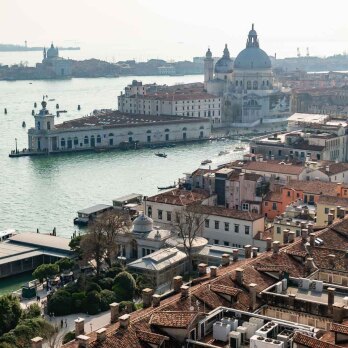
Venice’s Artful Jewel
Santa Maria della Salute is stunning with its dazzling Istrian stone, exquisite verd antique marble flooring, and gilded stucco. Inside, masterpieces by Titian, Tintoretto, and Palma il Giovane complement the cohesive space dedicated to the Virgin.
Rising at a critical water confluence, the basilica reflects in the lagoon, merging harmoniously with Venice's renowned aquatic beauty and skyline.
Perfect Salute Visit Tips
To appreciate Santa Maria della Salute's grandeur without crowds, arrive at 9 a.m. for calm light and stillness. Late evenings about 4 p.m. bring magnificent golden hues and less tourists. Avoid lunchtime, when cruise ship crowds arrive.
Weekdays in spring or autumn are less crowded. The Festa della Salute on November 21st is bright, but crowded.
Art, Wine, and Strolls
A short vaporetto ride or walk from the Salute leads to the Gallerie dell'Accademia, which houses Venice's greatest pre-19th century paintings.
Dorsoduro's peaceful alleyways behind the basilica enable you to sample real bacari with cicchetti, visit artisan shops, and discover secret squares.
The picturesque Zattere promenade provides tranquil walks with breathtaking views of Giudecca Island.
Respect, Reverence, and Ritual
Santa Maria della Salute is a place of active worship; therefore dress modestly with covered shoulders and knees.
Silence is key; avoid loud conversations and turn off phones. Photography is prohibited during Mass, and certain sections may be closed. Follow security procedures, respect sacred spaces, and consider making a small donation. Take some time to sit quietly and absorb the serene atmosphere.
Venice’s Artistic Crossroads
Punta della Dogana is Venice's lively cultural center. Across the lake, San Giorgio Maggiore island is home to Palladio's spectacular basilica as well as the Cini Foundation, which houses art exhibits and offers breathtaking views of St. Mark's and the Salute. Nearby, the former customs house houses the contemporary Punta della Dogana museum, which features cutting-edge art from the Pinault Foundation.
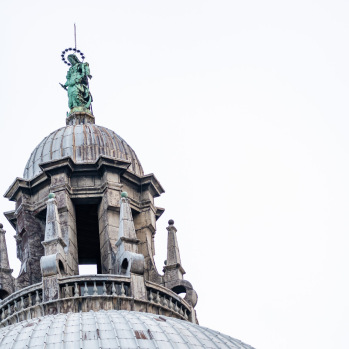
Divine Stones and Dreams
According to local folklore, during the plague, a lowly baker who was unable to offer money prayed every day.
In a dream, the Virgin Mary appeared and guided him to gather flawless stones from the lagoon. Architect Longhena appreciated their quality and learned of the vision, supposedly incorporating these miraculous stones into the basilica's foundation to represent faith and optimism.
Burnt Bread Miracle
The "Miracle of the Burnt Bread" is about a starving plague victim who prayed to Madonna della Salute. In a feverish dream, she was instructed to consume her charred bread.
She obeyed, and miraculously recovered.
This modest act of faith is thought to represent the collective optimism and spiritual strength that prompted the basilica's construction.
Priceless Beauty, Modest Cost
Santa Maria della Salute is still a functioning parish church, thus entry is free. Donations (between €1 and €5) are accepted to help with upkeep.
The Museo della Basilica, housed in the sacristy, charges a nominal fee (€3–€5) and displays liturgical relics, paintings, and church models.
While the church itself is breathtaking, the museum provides valuable historical and artistic context.
Inspiration Through Time
It has historically influenced painters and writers. Canaletto and Guardi memorialized Venice's grandeur in 18th-century paintings, helping to shape Europe's aristocratic perception of the city. Turner's watercolors captured the brilliant mood. Authors like as Henry James and Thomas Mann utilized the basilica as a symbol of beauty, transience, and spiritual yearning in their well-known writings.
Cinema’s Venetian Icon
Santa Maria della Salute's striking silhouette appears significantly in films like as Don't Look Now and The Talented Mr. Ripley, adding to Venice's mysterious and compelling aura.
Beyond movies, its distinctive picture can be found everywhere, including photographs, postcards, and paintings, making it one of Venice's most instantly recognizable and cherished emblems around the world.







